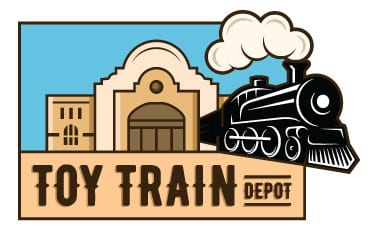Modeling Railroads
Are you interested in building a model railroad layout with scenery and operating trains?
There are many avenues to approach this project, and it will be your experience to learn more than you ever thought about trains, and modeling of railroads.
Usually one starts by just a simple layout on a piece of plywood, with only track and some simple idea of making an under the tree scene with a train or street cars running around. This usually gets the family involved (normally the purpose of the project) with their adding ideas, making or finding structures, hopefully studying scenes,
One has to decide early on, how big a project this might turn into….Is it just you, or are all the kids to grow into this?
So a note about Scales and Gauges of the models.
SCALES
- O scale: The scale of a model is the ratio of model size / full size. A popular scale is made by Lionel Trains, called O (oh) scale, and has a ratio of 1/48. Started in Germany, this scale originally was used for making doll houses. Relatively in modeling, this O scale is quite large, and requires lots of space, which can be a draw back (remember the Christmas tree). For example, a 15 foot tall actual real locomotive would scale to just less than 4 inches tall, which for a doll house looks perfect. But for under the tree, the track is the size of a dining room table. For little kids, the Lionel trains are indestructible, and easy for them carry and to put cars on the track. It makes a nice starter train for a small kids, especially if found a yard sale or flea market. Be sure the locomotive runs before you buy. You will recognize this scale by the 3 rail track.
- HO scale: The HO scale is about half of the O scale being 1/87. The HO scale’s origins is metric, so the relations between many of the scales are approximate. HO is the most popular size for model railroads, and the most for your money. Being smaller our 15 foot tall locomotive becomes 2 1/16 inches tall, so the model trees, buildings & people are smaller too. But it is harder for smaller kids to put trains on the track, and the rolling stock is less sturdy, especially when falling off the table.
Enough talk on the size and scale of model trains.
Actually there are about a dozen scales to consider in the future.
Some good references for further study are found to the right, a mix of URL’s and video.
GAUGES
Hand in hand with SCALES goes the width of the track, called the GAUGE (of the track). In the USA, the standard gauge is 4 ft 8 1/2 inches measured to the inside of the 2 rails; it is a story itself of why this width. Of course there are many gauges, and usually the scale and gauge go hand in hand or are close…but sometimes they are not nearly a perfect match. Our own interesting example is our TTD park trains which run on a 16 inch wide gauge, but the scale of the loco and cars is smaller, about a 1/5 scale. So for the 1/5 scale cars, their “to scale” track width should be 11.3 inches. Why does this park train use a much wider gauge of 16 inchs? Ahhhh, the extra width gives more safety and stability to our moving park train ride.
Some of the popular gauges, besides the standard, is 3 foot (narrow gauge) used on many US mountain railways. 2 ft is an older narrow gauge railway gauge especially in Europe, 20 to 12 inch for park trains and mining rail. And “scratch building scale modeling” gauges are 7 1/2 inch and 3 inch track widths. The width of smaller modeling railroads is quite close to the scale width.
YOUR FIRST TRAIN
Most of us train modelers got a train in our early teens, and perhaps followed the procedure below. Of course we had little funding, so we imagined what could be. More track was usually our long term goal. And we would go to the model store, even if we couldn’t afford to buy much.
Starting out just be brave, buy a train set (or ask for Christmas), new or used. Put it on a plywood, make a loop, and run it, fix the problems of dirt on the tracks, derailing, the loco that doesn’t respond (check the wiring). Now add a tunnel from cardboard, add a building or 2 pretend buildings…fronts only, add some trees, add a siding, or some dual track and turnouts, name the engine, get the kids involved, later on decide if you really want to go on and do this long term.
Google a search for model railroading 101 episode many ‘how to’ starting videos. Check out our links and videos to the right.
Links About Modeling
https://rb.gy/ltw5ew – Short Takes on Many Model Railroad Topics
https://rb.gy/4sjvl3 – Videos on How to Beginning RR Modelers
https://rb.gy/bv2g2u – Model Railroader YouTube Channel

